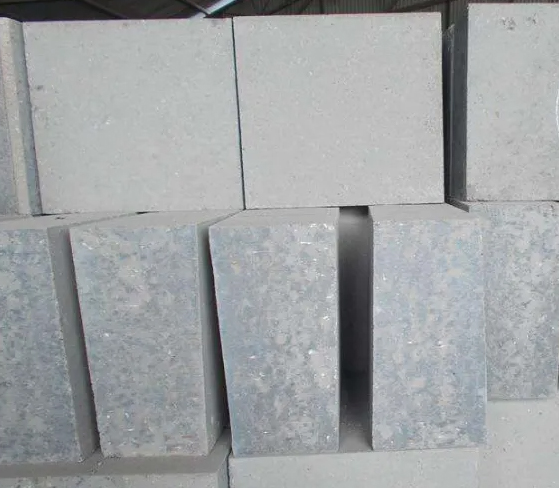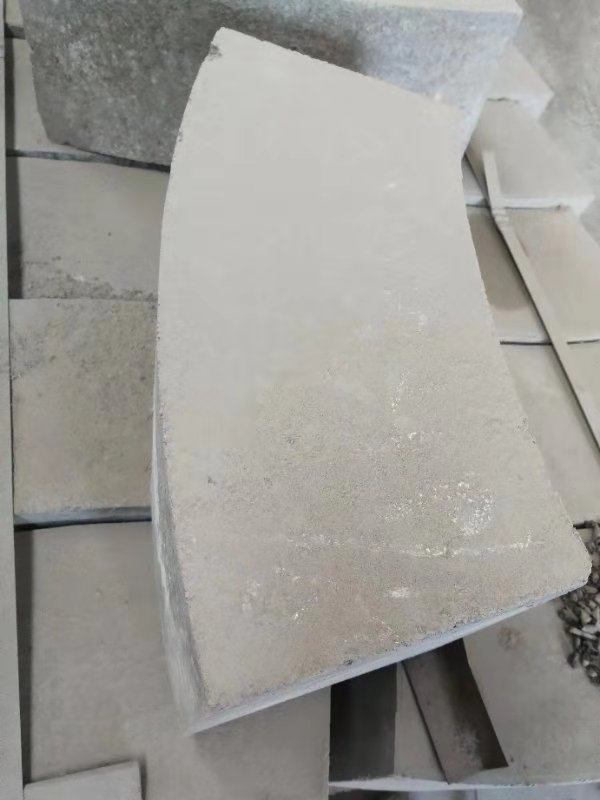فاسفیٹ پہننے والے مزاحم اینٹوں کے پیداواری عمل کا تعارف
Phosphate wear-resistant bricks have excellent wear resistance, high mechanical strength and good thermal shock stability. تاہم, there are many technical factors that affect its function. This article will introduce the production process of phosphate wear-resistant bricks.

Phosphate wear-resistant brick production process
- The high-alumina bauxite calcined at about 1600℃ in the rotary kiln is crushed into three grades of high-alumina bauxite aggregates: 5-1ملی میٹر, <1.2ملی میٹر, and fine powder with a specific surface area of ≥3500cm2/g. Its mineral composition is mainly α–A1203 and a small amount of mullite (3Al2O3·2Si02).
- The binder is made of industrial phosphoric acid (H3PO4 concentration ≥85%), industrial aluminum hydroxide and water, with a molar ratio of A12O3/P2O5.=1:3.2. The addition amount is usually about 7-9%, and about 2% refractory clay is added to improve the molding performance of wear-resistant bricks. Improve the dry strength of phosphate bricks. At the same time, it can also improve the performance of hanging kiln skins in cement rotary kiln refractory bricks.
- After calcining, the high-alumina raw material brings in a small amount of iron during the crushing and grinding process. When phosphoric acid or aluminum phosphate binder is added, a certain amount of hydrogen is released to expand the finished product, which seriously affects the density of the finished product. اس لیے, it is necessary to carry out brain material, and the rouge material time should be controlled at about 20-24 گھنٹے. The ambient temperature is kept above 15°C.
- After the bricks are formed by the 300t collision brick press, we use a 600T press to hit the high-strength phosphate bricks. The drying temperature is controlled at about 60°C. The drying time is preferably more than 48 گھنٹے.

- Heating criteria for heat treatment of dried bricks: Heating rate from room temperature to 100℃ is 13℃/hour; Heating rate from 100℃ to 300℃ is 40℃/hour; Heating rate from 300℃ to 500℃ is 150℃/hour; Constant temperature time at 500℃ is >15 گھنٹے. When cooling down, let it cool naturally.
- Ordinary bonded phosphate bricks use phosphoric acid as a binder. Phosphate wear-resistant bricks are made of industrial phosphoric acid and industrial aluminum hydroxide in a molar combination. This is the difference in their raw materials.
 رونگشینگ ریفریکٹریز فیکٹری
رونگشینگ ریفریکٹریز فیکٹری
WeChat
وی چیٹ کے ساتھ کیو آر کوڈ اسکین کریں۔